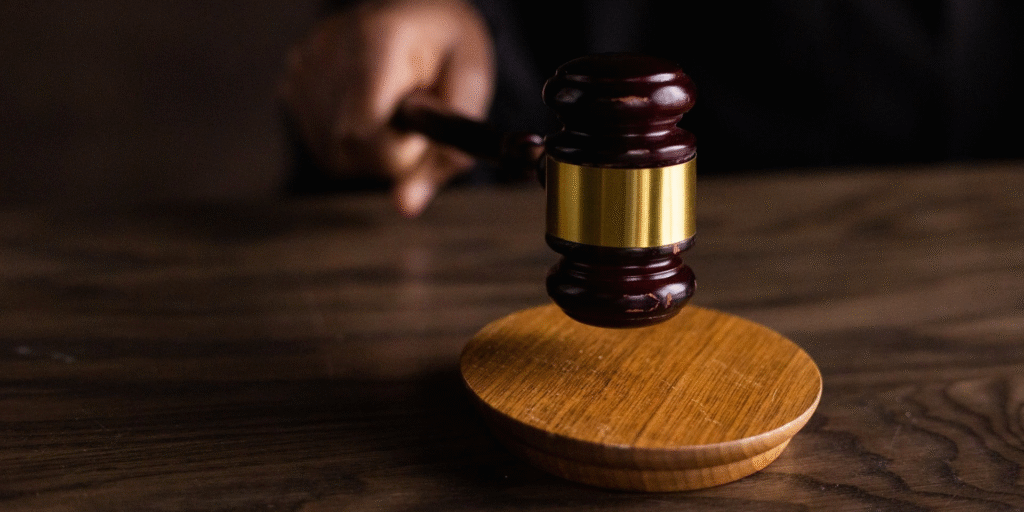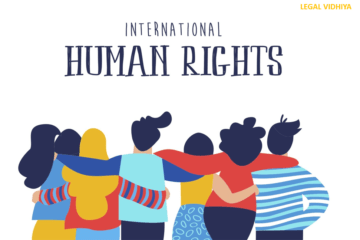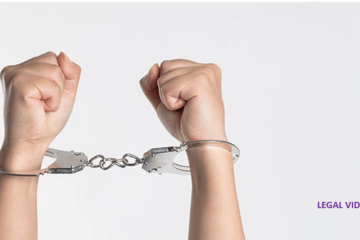
This Article is written by Mallika Kumari Amity University Patna an intern under Legal Vidhiya
ABSTRACT
The concerned article here throws a systematic approach and highlights over the basic human rights of the athletes being concerned respectively in the sports field of the country named, India and that too in alignment with the paramount law of the country in the basic fundamental sense, The Indian Constitution of 1950. Further ahead, the challenges and suggestions for the same has been propounded in this article in the latter part and have shown the concrete aspects of the jurisprudence’s essence as well.
KEYWORDS-
Fundamental rights jurisprudence, Sports law, Human rights, Legal rights, Constitutional rights, Jurisprudence.
INTRODUCTION-
Legal rights has been a major part of the contemporary era and its due roots has been traced in the landmark events of the history where people from time to time at micro and macro-level has duely emerged and collaborated or gets associated in the light or call for action in order to embrace and establish the justice-based spirit of the human rights at national and international level as just for the mere being a human certain basic human rights are non-negotiable and cannot be compromised at all in any scenario or at any cost; such instances in the specific field of sports law domain also plays a major part in the system as from time-to-time as situation-to-situation the exploiting instances of the talent and basic human rights of the players or athletes in terms of their economic, political, social, cultural or other crucial sense does comes into the picture impacted by several anthropological and vast complimenting and supplementing factors respectively such as the law, politics, corruption, authority’s power misuses, contracts between the parties and so on; that needs to be address for a promising society in such concern in the sports domain as subset and where India is emerging as a major frontplay to attract the interest or hype of the sports in various cadres such as cricket;etc at national and international level as the concerned domain expands from time-to-time.
LEGAL FRAMEWORK-
The Indian Constitution of 1950, talks about the notion of the basic fundamental rights given to all the citizens and some even given to non-citizens which are based on the concrete principles and jurisprudential essence of the natural justice law or theory or principles,as given under part3 of the said supreme document upon which the other legislations or statutes or laws gets passed and based upon a sit act as the grundnorm as upheld by the ‘Pure Theory of Kelsen’, between the articles 12 to 35 and upon infringement of the same, about five types of writs can be issued on accounts of supreme court under Article 32 and High Court in any given state under Article 226, although, the latter’s ambit is way broader than the former with respect to its coverage and entertaining part of the writs.
The major types of writs are- WRIT OF MANDAMUS (it is being issued when there is a call to ask any public official to perform its public duty in the duely assigned legal ambit), WRIT OF PROHIBITION( it is being issued in order to stop crossing the jurisdiction aspects on ultra vires terms by any sub-ordinate court), WRIT OF CERTIORARI( it is being issued in order to certify the act of any ultra vires nature being done or performed by the respective sub-ordinate court in the concerned or considered case respectively), WRIT OF QUO-WARRANTO( it is being issued in order to check the authority) AND WRIT OF HEABAS CORPUS( it is being issued against any given illegal detention as the case be it be). The mentioned forms of writs can be issued depending upon the facts and circumstances of each case’s and its concrete respective complexity and need as per the alignment of the jurisdiction of the court itself.
CONTEXT OF NECESSITY-
The articles majorly the article 14 as dealing with the facets of the right to equality and equal protection of the laws as aligned with the natural justice spirit and principles , article 21 as dealing with the notion of the right to life and personal liberty acting as the most prominent article to get interpreted in the wider sense, and article 19 as dealing with various fundamental rights works in the highlighted prospects of the ‘Golden triangle principle or doctrine’ as established in the MANEKA GANDHI’S CASE[1] and it does get covered under the ‘BASIC STRUCTURE DOCTRINE OF THE IDNIAN CONSTITION’ AS LAID DOWN IN THE KESAVANANDA BHAARTI’S CASE[2] as well.
Further, articles such as 15,16, 17 and 23, and others as well deals in various aspects in contributing at its level to improve gender equality and no forced labour and no scope for untouchability giving the wider platform for any person from any caste , sex, greed, gender or religion , on neutral level to showcase their respective talent and grab this opportunity in order to develop sport’s spirit and level or society of the nation, improving the nations; image at globalized scale which is further improving the qualitative and quantitative terms of the economy, culture and sports or professionals aspects of the nation as well in holistic and wider terms which is a way to a better human civilization.
The rights evolution in various domains can be traced to the collaborative functioning of the HISTORICAL, SOCIOLOGICALA ND REALIST SCHOOL OF JURIPRUDENCE, where the society and aw acts in complimenting way, impacting each other and further the judge’s due creativity and subjective interpretation gives shape to the theory-based aspects of the law into the practical and real-life scenes or cases or situations from time-to-time on broader sense and this highlights the promising future outlook in this regards of trend as well as can be traced to the past from the contemporary era as well.
LANDMARK CASES-
There has been numerous aspects of cases that ahs been coming into the picture from time to time and highlighting the different crux and matrix or due aspects of the facets of the concerned or considered sports law domain in the light of the human rights of athletes and the aligned legal safeguard as well, such as in one notable case the aspect of the right to livelihood has been highlighted in the aspect of article 21 covering under the basic right of the sports players[3]; further in another important case as well, the notion of the gender equality has been discussed in holistic sense well in light of grating and balancing the basic human rights in the sports field in terms of gendered aspects or prospects or matrix[4] and in various highlighting and landmark yet notable cases a s well as emerging and the scope for the concerned or considered part is still evolving into the picture or matrix from time-to-time depending upon the uniqueness and need of the cases.
NOTE IN HOLISTIC ALIGNED ASPECTS-
Further ahead, cases under the due ambit of the Equal Remuneration Act of 1976 have came into the picture, and also in the aspects or due legal ambit of the National Anti-Doping Rules, 2021 (aligned with the aspects of the WADA Code), Labour and employment laws, National Sports Development Code, 2011; Right to Information Act, 2005;POSH-Sexual Harassment of Women at Workplace Act,2013;etc.
CHALLENGES-
The challenges comes to the lack of infrastructure with regards to the implementation of such legal aspects as there is lack of trained professionals and even the players or actors being involved in due discharge of their roles and functions in such respective terms in this concrete scenario, lacked the required zeal, backed with other factors such as lack of standardized criteria or legal ambits developments in certain matters affecting the concerned or considered players here respectively in the core terms such as transfers from one sports club to another, lack of adequate health facilities available, lack of proper paying scenario, exploiting contractual terms of the authority hiring them on professional notes; etc.
In light of such issues major hindrances and challenges come at micro and macro-level in different zones or horizons such as political, economic, cultural, legal, social, and various other anthropological aspects that comes as a subject-matter of concern and study under various domains or branches of study such as Sports Law, Constitutional Law, Human Rights Law, Jurisprudence, Political Science, Sociology, History, Psychology and various other allied field of social science and law at specialized and inter-disciplinary aspects in multi-sense.
And all these in holistic and vital sense acts as the major hindrance in the due and adequate judicious development of the talent and human civilisation, as sports is the major part of the mainstream aspects of the society and different age group people are connected to it in this liberalized and globalised era as well.
The upcoming challenges at material and substantial level further impacts the other associated sectors and fields and further more will violate the basic human rights enforcement of the several international covenants of which the country or nation here referred or called as india is a signatory of, such as iccpr-the international covenant on civil and political rights, icescr-the international covenant on economic, social and cultural rights; cedaw-the convention on the elimination of all forms of discrimination against women, cerd- the international convention on the elimination of all forms of racial discrimination and others as deemed under the mentioned-spirit terms as well in aligned and holistic regards respectively in itself.
SOLUTIONS-
The solutions can be based on the terms of the adopting a multi-dimensional and multi-faceted approach, with thorough empirical study being done by the experts in the respective field of the sports, in order to track and tackle the upcoming adverse and diverge forms or sorts or kinds of problems or issues and addresses them in the most-vital way, by proper collaboration of the authoritative aspects at both inter and intra-level and with due stricter development of the law and stricter enforcing and checking units for the same in aligned regards in order to ensure a healthy working system for the human athletes in order to safeguard their legal nuances of basic rights in the most fruitful way so that, too to grant them justice in better sense.
Further, comparative studies of various nations can be done as well in aligned above-mentioned regards so as to build a foundational plan for the betterment of the country by incorporating the good examples of approaches and techniques well-developed by the other nations, which our country will be most suitable for in such regards and this will in turn, boost the collaborative and collective universal goal of building a strong environment full of maintenance and protection of the basic human rights of the athletes in due ambit of the popular legal maxim which means, where there is a right ,there is a remedy as well for the same.
CONCLUSION-
Thus it can be concluded that, this article acts as the call for an action in order to motivate and highlight the prospects as challenges and to further ask for the suggestions in the most balanced way so that, the due development and ensurance of the basic rights of the athletes can be maintained in the country and problem underlying in the same front can be encountered and handled in a well-versed, justifiable and yet fair-reasonable manner as well.
REFERENCES-
- SCC ONLINE,www.scconline.com,
- NATIONAL HUMAN RIGHTS COMMISSION,https://nhrc.nic.in,
- WHITE BLACK LEGAL,https://www.whiteblacklegal.co.in,
- LAW BHOOMI, https://lawbhoomi.com,
- SERIALS PUBLICATIONS, https://serialsjournals.com,
- COURT OF ARBITRATION FOR SPORT, https://www.tas-cas.org,
- RESEARCH GATE, https://www.researchgate.net,
- iPleaders Blog, https://blog.ipleaders.in,
- LEGAL SERVICE INDIA, https://legalserviceindia.com,
- The Indian Constitution of 1950.
[1] Maneka Gandhi v. Union of India, AIR 1978 SC 597.
[2] Kesavananda Bharati Sripadagalvaru and Ors v. State of Kerala and Anr, AIR 1973 SC 1461.
[3] Board of Control for Cricket in India v. Cricket Association of Bihar & Ors, (2016) 8 SCC 535
[4] Vishaka v. State of Rajasthan, (1976) 6 SCC 241
Disclaimer: The materials provided herein are intended solely for informational purposes. Accessing or using the site or materials does not establish an attorney-client relationship. The information presented on this site is not to be construed as legal or professional advice, and it should not be relied upon for such purposes or used as a substitute for advice from a licensed attorney in your state. Additionally, the viewpoint presented by the author is personal.




0 Comments